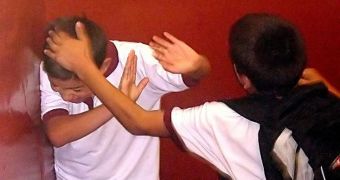In the past, bullying in the school was fairly clear-cut. A kid that was stronger than others picked on the weaker students all the time, beating them up, and calling them names. But modern-day bullying is very different from the one in the past, investigators say. Today, it's possible to harass victims outside school as well, using a variety of means that modern technology makes available to nearly everyone. Text messages, social media and other Internet outlets make it easier for bullies to pick on their targets.
Unfortunately, this unprecedented level of opportunities for bullies translates into more and more bullied students being unable to cope with the pressure. This is a major catalyst for drastic decisions, which can ultimately only go both ways. Victims can either pick up a gun and start shooting everyone in their schools, or they commit suicide. The latter “option” is used more and more these days, and by students that are oftentimes aged only 10 to 15. Experts say that technology-driven bullying is the main reason why victimized children jump off buildings or hang themselves, PhysOrg reports.
Cyberbullying is “becoming more prevalent than the face-to-face type of bullying. They [the bullies] don’t have to do it in front of a person; they can put in a different name or login and be anonymous,” say faculty researchers at the Penn State Harrisburg. The specialists argue that the effects of bullying can be significantly reduced by integrating kindness-based programs in schools. They refer to them as the “antithesis of victimization,” and believe the programs could actually be effective. “Unlike previous generations, today’s adolescents are victimizing each other at alarming rates, leading adults to ask why. Is it caused by television? Video games? Music? Is an absence of moral and civic values contributing to the rampant rise…?” ask the researchers in a new paper, scheduled for publication.
The new work was conducted by PSH assistant professor of education Shanetia Clark, working together with colleague Barbara Marinak, an assistant professor of reading. Given that both national- and local-level awareness programs are in place, and that the phenomenon does not appear to be letting up, the investigators propose that a broader view on the problem may be necessary. They say that the kindness-oriented programs could reverse the lack of empathy modern society exhibits.
“Carefully selected texts provide an anonymous forum for students to examine the circumstances that can lead to violent behavior. By engaging with texts and others, young people can shape their identities, make sense of the world and move away from victimizing themselves and others. Teachers can help by critically discussing and unpacking the moral and civic values in these important stories. Victims, perpetrators and spectators in complex school systems can speak more openly through a veil of anonymity,” the experts say.

 14 DAY TRIAL //
14 DAY TRIAL //